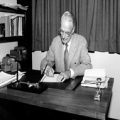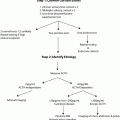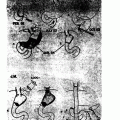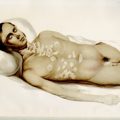Portrait of Dr. Arthur M. Shipley. (Reproduction by Mark Teske, professional photographer at University of Maryland School of Medicine)
Introduction
Dr. Arthur M. Shipley was a renowned American surgeon and native Marylander. In 1911, Dr. Shipley was appointed chairman of surgery at the University of Maryland in Baltimore. He was a wartime surgeon and published 80 diverse manuscripts ranging from femoral fractures to dehisced abdominal incisions. Of historical significance is the fact that Dr. Shipley resected the first preoperatively diagnosed pheochromocytoma on June 27, 1928. He was well known by his contemporaries as a clinician with compulsive attention to detail and in-depth knowledge of the medical and surgical literature. Dr. Shipley was elected to membership in the Southern Surgical Association in 1927, and in 1943 served as vice president of the American Surgical Association. He remained at the University of Maryland School of Medicine until his retirement in 1948 (Fig. 1).
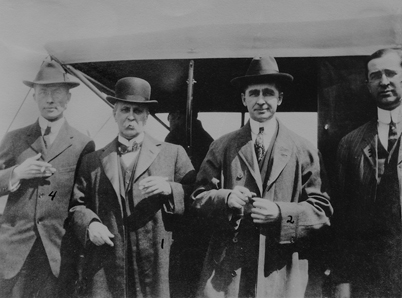
Fig. 1
Dr. Arthur M. Shipley and other prominent surgeons at the old Baltimore City Hospital (now Johns Hopkins Bayview), 1913—from left to right, Thomas Boggs, William Osler, Thomas B. Futcher, and Shipley
Background
Dr. Shipley was a fifth-generation member of the Shipley family and was born in Maryland in 1878 to Roderick O. and Wilhelmina Clark Shipley. As a student at the University of Maryland School of Medicine, Dr. Shipley maintained a brilliant scholastic record and was recognized as a man of great potential. He graduated in 1902 serving important administrative hospital duties as a senior resident. During the First World War (1917–1919), Dr. Shipley was chief of surgical services at the 8th American Evacuation Hospital in Juilly, France [1]. This position afforded him the opportunity to see many soldiers with infected and nonhealing wounds. In this regard, he wrote, “These wounds were all heavily infected. The streptococci exist in various strains, some are more vicious than others and have an uncanny ability to break down the local defenses of the body. The time (for aggressive early treatment) factor was most important” [2].
In 1911, at the early age of 33 years, he became professor of surgery and chief of the surgical service at the University of Maryland (1911). This position provided an opportunity for the exercise and development of his gifts as a teacher and organizer. He was widely recognized as one of the outstanding teachers of clinical surgery in the USA, with a broad base of knowledge, expert organization, and a forceful and stimulating method of presentation.
Endocrine Surgery
Dr. Charles Mayo is credited with resecting the first pheochromocytoma in the USA . This resection was performed in 1926 on the now famous patient, Sister Joachim. That it was a pheochromocytoma was, however, determined only by the final postoperative pathologic determination of the specimen [3]. The honor of resecting the first preoperatively diagnosed pheochromocytoma belongs clearly to Dr. Shipley. In 1928, Dr. Shipley was called in consultation on a patient by the chairman of medicine in Baltimore, Dr. Maurice C. Pincoffs. The patient was a 26-year-old woman with worsening “attacks with palpitation of the heart” over a 10-year period. In addition to what would now be considered classical, paroxysmal hypertensive attacks, the patient had a positive family history . Interestingly, her sister had a superior mediastinal mass “which interfered with breathing and caused distention of the neck vessels.” Physical examination of the patient revealed nothing remarkable at rest; however, during the attacks, her blood pressure rose from 120/90 to 219/110 mmHg and she was observed to have facial flushing, tremulous hands, tachycardia, and hyperpnoea. A preoperative diagnosis of a medullary tumor of the adrenal gland was made by Doctor Pincoffs. Because cross-sectional imaging and biochemical profiles were not available until the next decade, Shipley had no information about the characteristics of the suspected mass, or of its laterality. Dr. Shipley pondered: “The thing that immediately concerned us was to determine which gland was involved.” Undaunted, Dr. Shipley planned an elective exploratory operation on June 14, 1928 .
Stay updated, free articles. Join our Telegram channel

Full access? Get Clinical Tree



